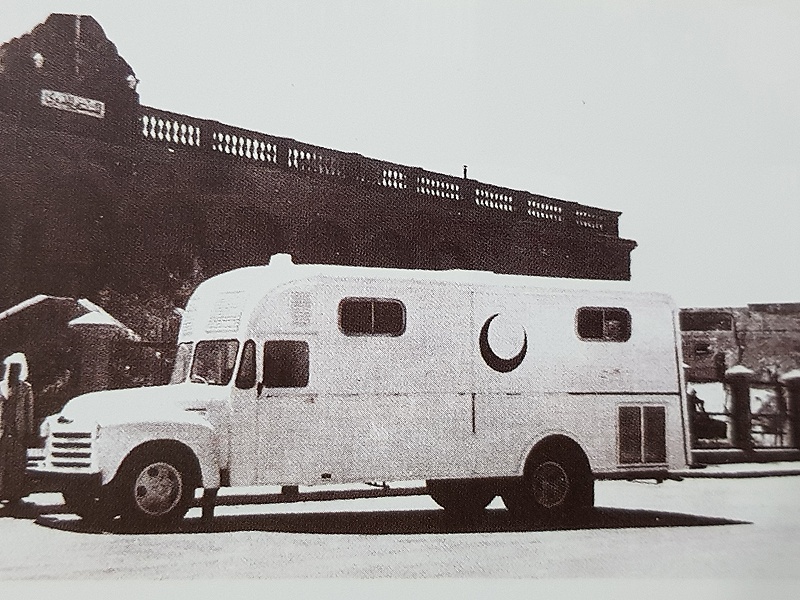

KUWAIT: The 'Kuwait in 400 Years' book, to be released by Sheikha Intisar Salem Al-Ali Al-Sabah's Lulua Publishing, contains more than 1,320 documents and photos revealed for the first time both Arabic and English. The book's white-colored cover displays the photos of Kuwait's leaders in the past 400 years. The introduction pages is filled with what resembles the national spirit and long lasting relation of the Kuwaiti people and their land, said Sheikha Intisar, adding that nations are not just defined by borders, but with passion and feelings. Sheikha Intisar pointed out that this idea of the book came about six years ago, adding that she wanted to publish a book that would provide a more definitive history of the country.
Throughout her readings in Kuwait's history and discussions, she found out that many Kuwaitis from the younger generation were unfamiliar with the country's history despite the availability of numerous books and publications. The book took more than five years of research to put it together, looking into the most prominent photos and documents along with a number of editorial reviews of the text and history by experts to end with a final draft. Sheika Intisar revealed that she visited various ministries and institutions along with public and private libraries to document and gather materials for the book. Dr Hamad Al-Qahtani reviewed the book after the process of citation and referencing. Sheikha Intisar said she was looking forward to distribute the book to Kuwaiti embassies and diplomatic missions around the globe, adding that there were plans to publish the book in both French and Spanish as requested by the Ministry of Information.
In the introduction, a number of old maps of Kuwait between 1504 and 1505 -- drawn up by Nicola Caverrio -- provide a documentation of the country's boundaries. The explorer Carsten Niebuhr also mentions Kuwait in 1765.Rare texts from Colonial Sir Lewis Baily in 1863 pointed out to Kuwait's establishment in 1613.The first to refer to Kuwait by its name and speak about its infrastructure and economy was Damascene traveler Murtatha bin Alwan in 1709.The book documents the history of Kuwait's leaders, starting with the first ruler and founder of the country Amir Sabah bin Jaber (1718-1762). Under Kuwait's reign of second ruler the Amir Abdullah bin Sabah bin Jaber (1762-1891) (Al-Salimi) was hoisted on Kuwaiti Ships in 1762. A book by the German explorer Carsten Niebuhr mentioned Al-Qurain and Kuwait in 1772.
Succeeding as Kuwait's third ruler was the Amir Jaber bin Abdullah bin Sabah 1813-1859 during a period, which labeled him as "Jaber Al-Khair" and saw the building of Kuwait's second Soor in 1814 and the signing of the first marine agreement with the Britain. Between 1859 and 1866, Amir Sabah Bin Jaber bin Abdullah bin Sabah Kuwait's fourth ruler witnessed rise in business shown in maps and documents of business transactions of Kuwaitis with India and Al-Basra.
As Kuwait's fifth leader -- between 1866 and 1892 -- Amir Abdullah bin Sabah bin Jaber bin Sabah ruled during a period that witnessed many events such as the issuing of Kuwait's first currency and establishment of the first official schools for the memorization and correct recitation of the Holy Quran. Amir Mohammad bin Sabah bin Jaber bin Sabah (1892-1896) was Kuwait's sixth ruler during a four-year period that saw the establishment of the first meat and bakers markets.
The book also goes through the period of the seventh ruler Sheikh Mubarak Al-Sabah Al-Jaber Al-Sabah (1896-1915) during the establishment of the modern State of Kuwait and the construction of both the Red and Seif Palaces, along with the opening of the first regular school and the rising of the first national flag. Despite Sheikh Jaber Al-Mubarak Al-Sabah's short period of ruling between 1915 and 1917 business boomed and Dasman Palace was constructed. The ninth ruler Sheikh Salem Al-Mubarak Al-Sabah (1917-1921) followed Sheikh Mubarak. During his reign, the first geological survey of Kuwait was taken.
During the tenth rule of Sheikh Ahmad Al-Jaber Al-Mubarak Al-Sabah (1921-1950), the period witnessed a rise in education and the establishment of Al-Ahmadiya School and the first Shurra Council along with the first educational scholarship delegation outside of Kuwait. Then came Kuwait's eleventh ruler Sheikh Abdullah Al-Salem Al-Mubarak Al-Sabah (1950-1965), an era with many important events such as the independence of Kuwait, the issuing of first official Kuwaiti currency, Constituent Assembly elections, promulgations of the constitution, and establishment of the first ministry in Kuwait. Sheikh Sabah Al-Salem Al-Mubarak Al-Sabah (1965-1977) Kuwait's twelfth ruler's era saw the establishment of the first scientific university, Organization of Arab oil producing countries, and the first station in the middle east for satellite communications.
The book also focused on the constructional and cultural renaissance that was witnessed under the ruling of Sheikh Jaber Al-Ahmad Al-Jaber Al-Sabah (1977-2006) which witnessed the opening of the Media complex, TV and Broadcasting building, Kuwait International Airport, Kuwait Towers, and much more. Photos in the book documented the most important parts of Kuwait's fourteenth ruler Sheikh Saad Al-Abdullah Al-Salem Al-Sabah (2006) who was given the names Lion of the liberation, liberation hero, and the Fatherly Amir. The second to last part of the book shows the most significant historical events of Kuwait's fifteenth ruler His Highness the Amir Sheikh Sabah Al-Ahmad Al-Jaber Al-Sabah and his role in strengthening Kuwait's importance internationally. The book final pages give a brief summary of Kuwait and data of its population and citizens from 1765 to 2016 along with its climate, territorial waters, and the names Kuwaitis gave to the wind and rain. - KUNA


